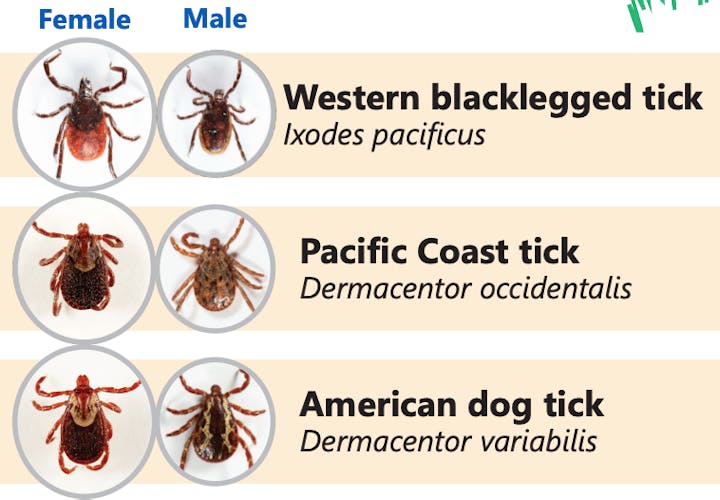Tick Identification

If you've found a tick on yourself or your pet and want to have it identified, you can submit a service request or stop by our office (Mon-Fri, 8-4:30) to arrange for the tick identification.
People who have removed a biting tick sometimes wonder if they should have it tested for evidence of infection. As per CDC guidance, although some commercial groups offer testing, in general this is not recommended because:
- Laboratories that conduct tick testing are not required to have the high standards of quality control used by clinical diagnostic laboratories. Results of tick testing should not be used for treatment decisions.
- Positive results showing that the tick contains a disease-causing organism do not necessarily mean that you have been infected.
- Negative results can lead to false assurance. You may have been unknowingly bitten by a different tick that was infected.
- If you have been infected, you will probably develop symptoms before results of the tick test are available. If you do become ill, you should not wait for tick testing results before beginning appropriate treatment.
So what should you do after a tick bite? Watch for symptoms for 30 days. Call your healthcare provider if you get any of the following:
- Rash
- Fever
- Fatigue
- Headache
- Muscle pain
- Joint swelling and pain
Treatment for tickborne diseases should be based on symptoms, history of exposure to ticks, and in some cases, blood test results. Most tickborne diseases can be treated with a short course of antibiotics.
Learn more from CDC's Tick Bite - What to Do sheet.
Page last reviewed: April 11, 2025

